Elbow Complex & Stability
1/31
There's no tags or description
Looks like no tags are added yet.
Name | Mastery | Learn | Test | Matching | Spaced |
|---|
No study sessions yet.
32 Terms
The role of the elbow is to position
the hand for optimal function
restrictions in the elbow lead to
compensations in shoulder/wrist
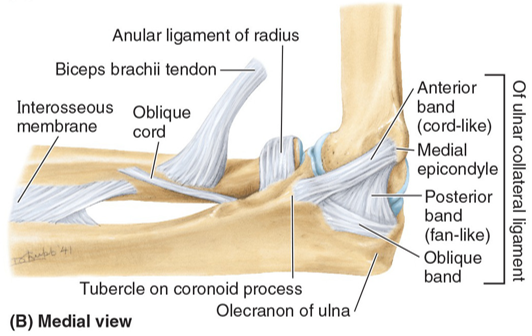
Medial Collateral Ligament or Ulnar Collateral Ligament is comprised of 3 bands
anterior, posterior, & transverse bundles
The Medial Collateral Ligament or Ulnar Collateral Ligament connects the medial epicondyle to the
medial margin of trochlear notch of ulna
Medial Collateral Ligament or Ulnar Collateral Ligament exists to restrict
valgus stress
Lateral Collateral Ligament (Radial Collateral Ligament) connects the Lateral epicondyle to the
annular ligament
Lateral Collateral Ligament (Radial Collateral Ligament) connects to the
medial angulation of ulna on humerus (Varus Stress)
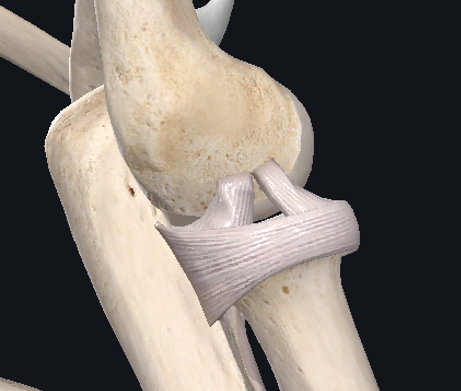
LCL Complex of the elbow comprises of
RCL
Annular ligament
Lateral Ulnar collateral ligament/Ulnar-Radial Collateral ligament: PLRI (provides rotary stability to radius)
Elbow boney Stability comes from
RH & UH
Coracoid: Buttress against posterior displacement of forearm
Elbow Stability from anterior jt capsule provides restraint against
varus & valgus force w/ elbow in full extension
elbow stability from MCL provides Valgus Restraint & medial posterior rotatory stability. When position is the MCL taut in?
Pronation
The Flexor pronator group is on medial side of elbow therefore the
extensor supinator group on lateral side
muscular extensors on lateral side provides compressive stability to the elbow & protect against
varus stress
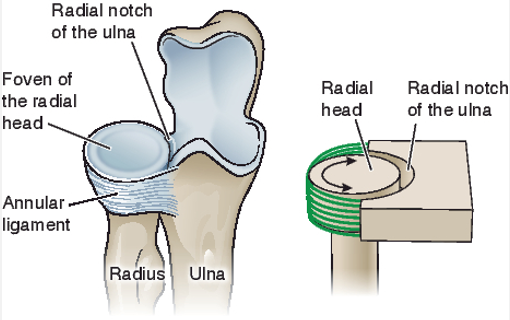
Annular Ligament maintains Radial Head in position by its form of 4/5ths of a ring. It is lined w/ hyaline cartilage & blends w/ the
med & lat collateral ligaments
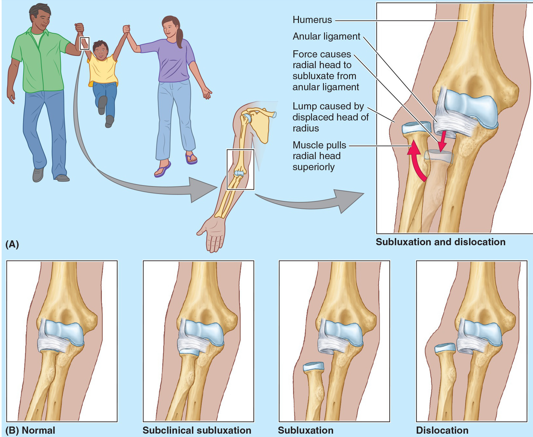
Dislocation of Radial Head: Nursemaid's Elbow occurs due to radial head being
not well formed w/in annular ligament
Younger 1-4 years old
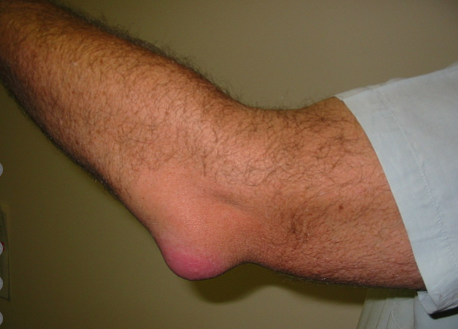
Olecranon Bursa is found superficial to the olecranon process of the ulna, located between the skin & bone. Usually a result of
direct trauma or mirco-trauma; Studier’s Elbow
Septic related to infection
tx: Compression
Avoidance of provocative activities
Analgesics if necessary
Musculoskeletal Injuries of the elbow account for a small overall proportion of MSK conditions, can lead to High levels of disability. Common conditions are:
Fractures/Dislocations
Instability/Ligamentous injuries
Tendinopathies: Overuse
Neural Injuries/Entrapments
A pt w/ elbow pain may present w/ red flag conditions that are not MSK related. These red flags may be referred pain to the elbow stemming from
acute MI, Pancoasts syndrome, esophageal motor disorders
a pt w/ elbow pain may present w/ red flags including non- MSK acute painful swelling which may be
gout, septic arthritis, osteosarcoma, hemarthrosis, soft tissue abscess, cellulitis
during elbow pt eval, screen the
c-spine: radicular pain
shoulder: referred pain
neurologic exam: Brachial Plexus, TOS, Proximal or Distal Neural Entrapments
Clinical Tests and Measures during eval of the elbow
UQS
Observation, palpation
Active & Passive Elbow ROM
Elbow/Grip/Pinch Strength
Elbow Special Tests
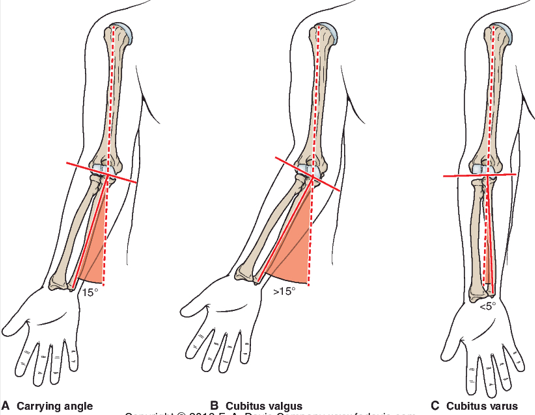
In eval, observation of the elbow must look out for posture & carrying angle. What are the normal ranges & what to look out for?
Normal valgus (Males 5-10°; Females 10-15°)
Asymmetry, Deformity
Signs of inflammation: Edema, Erythema, Warmth
elbow Extension/Flexion AROM
0-145°/150°
elbow flexion/extension strength is strongest at
90°
elbow pronation/supination strength is strongest in
neutral
DASH pt reported outcome measures
30 questions
5 point scale
Higher score is higher disability
Quick DASH pt reported outcome measures
11 questions
MCID 5.91-20
Reliability and validity = good
RCL/LCL provides elbow stability from Varus stress & Posterolateral rotatory restraint. What position is it taut in?
Supination
if the RCL/LCL is injured brace in
pronation or neutral
If the elbow MCL is injured, brace in
supination or neutral
muscular flexors on medial side provides compressive stability to the elbow & protects against
valgus stress
elbow Supination/Pronation AROM
0-80°/90°